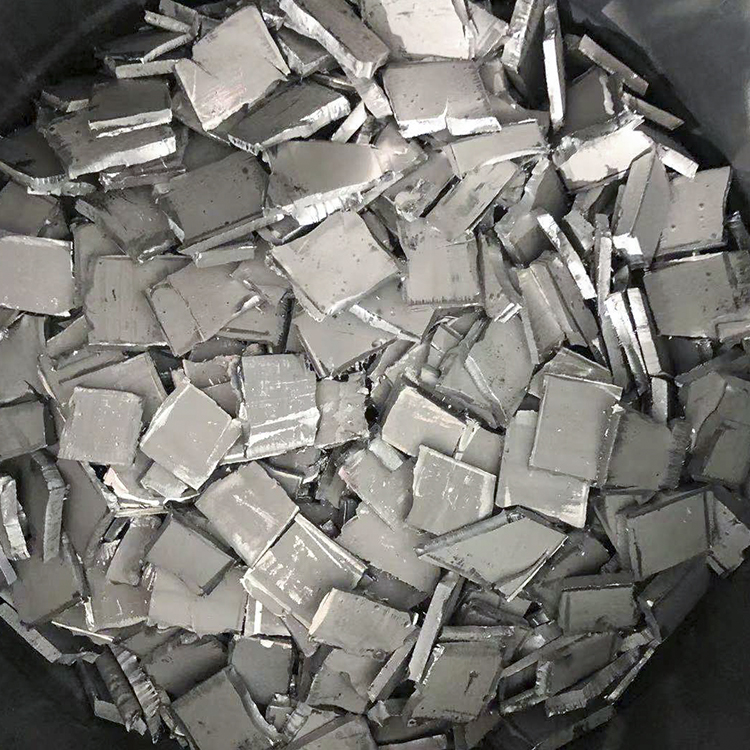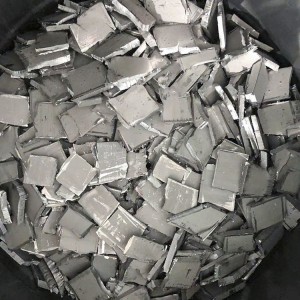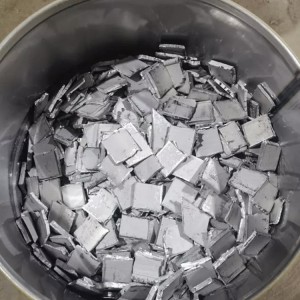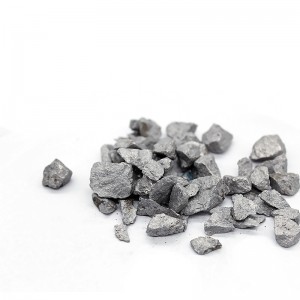taas nga kaputli 99.95% nga dugang nga haluang metal nga presyo sa cobalt metal
| Ngalan sa Produkto | Cobalt Cathode |
| CAS No. | 7440-48-4 |
| Porma | Flake |
| EINECS | 231-158-0 |
| MW | 58.93 |
| Densidad | 8.92g/cm3 |
| Aplikasyon | Mga superalloy, espesyal nga asero |
| Kemikal nga Komposisyon | |||||
| Co:99.95 | C: 0.005 | S<0.001 | Mn:0.00038 | Fe: 0.0049 | |
| Ni:0.002 | Cu:0.005 | Ingon: <0.0003 | Pb:0.001 | Zn:0.00083 | |
| Si<0.001 | Cd:0.0003 | Mg:0.00081 | P<0.001 | Al<0.001 | |
| Sn<0.0003 | Sb<0.0003 | Bi<0.0003 | |||
Deskripsyon:
Block metal, angay alang sa pagdugang sa haluang metal.
Paggamit sa electrolytic cobalt
Ang lunsay nga cobalt gigamit sa paghimo sa X-ray tube cathodes ug pipila ka mga espesyal nga produkto, ang cobalt halos gigamit sa paghimo.
sa mga haluang metal, init nga kusog nga mga haluang, gahi nga mga haluang metal, mga welding nga mga haluang metal, ug tanan nga mga klase sa kobalt nga adunay sulud nga asero, pagdugang sa Ndfeb,
permanente nga magnet nga mga materyales, ug uban pa.
Aplikasyon:
1. Gigamit alang sa paghimo sa superhard heat-resistant alloy ug magnetic alloy, cobalt compound, catalyst, electric lamp filament ug porcelain glaze, etc.
2. Panguna nga gigamit sa paghimo sa mga de-koryenteng produkto sa carbon, friction materials, oil bearings ug structural materials sama sa powder metallurgy.
Gb electrolytic cobalt, laing cobalt sheet, cobalt plate, cobalt block.
Cobalt – pangunang gamit Ang metal kobalt kay gigamit sa mga haluang metal.Ang kobalt-based nga mga alloy kay usa ka kinatibuk-ang termino alang sa mga haluang metal nga ginama sa cobalt ug usa o daghan pa nga chromium, tungsten, iron, ug nickel nga mga grupo.Ang pagsul-ob sa pagsul-ob ug pagputol sa paghimo sa himan nga puthaw nga adunay usa ka piho nga kantidad sa cobalt mahimong labi nga mapauswag.Ang mga stalit cemented carbide nga adunay labaw pa sa 50% nga cobalt dili mawala ang ilang orihinal nga katig-a bisan kung gipainit sa 1000 ℃.Karon, kini nga matang sa mga semento nga karbida nahimong labing hinungdanon nga materyal alang sa paggamit sa mga gamit sa pagputol sa bulawan ug aluminyo.Niini nga materyal, ang cobalt nagbugkos sa mga lugas sa ubang mga metal nga karbida sa komposisyon sa haluang metal, nga naghimo sa haluang metal nga mas ductile ug dili kaayo sensitibo sa epekto.Ang haluang metal welded sa ibabaw sa bahin, sa pagdugang sa kinabuhi sa bahin sa 3 ngadto sa 7 ka beses.
Ang labing kaylap nga gigamit nga mga alloy sa aerospace nga teknolohiya mao ang nickel-based alloys, ug ang cobalt-based alloys mahimo usab nga gamiton alang sa cobalt acetate, apan ang duha ka mga alloy adunay lain-laing mga "kusog nga mekanismo".Ang taas nga kalig-on sa nickel base alloy nga adunay sulod nga titanium ug aluminum tungod sa pagporma sa NiAl(Ti) phase hardening agent, sa diha nga ang running temperature taas, ang phase hardening agent particles ngadto sa solid solution, unya ang alloy dali nga mawad-an og kusog.The Ang kainit nga pagsukol sa kobalt-based nga haluang metal tungod sa pagporma sa mga refractory carbide, nga dili sayon nga mahimong solid nga solusyon ug adunay gamay nga diffusion nga kalihokan.Kung ang temperatura labaw sa 1038 ℃, ang pagkalabaw sa kobalt-based nga alloy klaro nga gipakita.Kini naghimo sa kobalt-based nga mga haluang nga perpekto alang sa high-efficiency, high-temperature generators.










